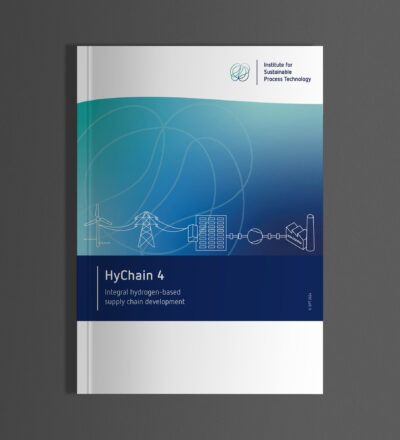This report showcases the findings of a three-year innovation project, and provides a deeper understanding of drivers and mechanisms that steer the development of new hydrogen value chains, with a primary focus on decarbonization of hard-to-abate industries. The result is the HyChain model that supports hydrogen supply chain development by facilitating joint decision making with individuals as well as groups of stakeholders in a public-private setting. It offers a solid basis for future governance, maintenance, development, and deployment of the HyChain Model.
The HyChain model, developed in close cooperation with industrial partners and cluster representation for validation and verification, is a robust mathematical optimization model. It allows for long-term investment modelling of system decarbonisation over the course of the energy transition. It is useful to coordinate the multi-stakeholder investments across energy supply, infrastructure, and industrial demand on a year-by-year basis, necessary to achieve our strategic goals such as reaching net zero in time while ensuring a robust versatile industrial cluster.
The model has been applied in a number of case studies in a multi-stakeholder setting with project partners from regional authorities, industry, energy, and network operators. The consortium experienced that there is substantial interest in the availability of the HyChain Model for transition planning in industry and the Cluster Energy strategies, as well as the future role of industry in the Dutch society in terms of the material output and the economic contribution.
The service model developed in this project builds on early arrangements to support the Cluster Energie Strategie 2.0 (CES 2.0) for SDR and Rotterdam-Moerdijk and is currently applied in the analysis for the next edition (CES 3.0). The decision support tool covers the hydrogen system, and for balanced assessment also includes the electricity system as well as carbon capture and storage in the Netherlands.
Download your free copy
Our publications are free to access. Simply provide your first name and email address to download.
